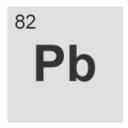Kangtaum.zip
_
_
Kangtaum is an attempt at a real-time implementation of the text-to-(Black Metal)music algorithm proposed by Dave Tremblay.
The algorithm was intended for use with Tolkien’s writing; this version will produce a microtonal scriptophonic ‘metal’ composition from any text file that is input. The default is the poem She Bomber by Eliza Gregory, the text currently being converted is output to the Pd window.
_
_
_
Here's how it works:
·The octave is divided in 26 equal steps (26 microtones, one for each letter).
·The ordering of the letters, from low to high, is:
E-O-V-I-Q-C-F-A-J-Z-P-H-B-Y-S-R-K-D-T-L-X-M-N-G-W-U based on their frequency of use in the sample text (Tolkein).
·One letter represents a duration of 1/8th note.
·One comma, parenthesis or semicolon is a ‘tie’ to the last note played (1/8th duration normally) is continued for a ¼.
·A full stop, colon, exclamation or question mark is a pause of 1/8th measure.
·There are three transcription tracks:
- The melody: It is each letter and punctuation in the text played one after the other.
- The chords: A chord lasts as long as a word in the melody (for example, a three-letter word will last 3 eights notes, and a nine-letter word will last 9 eights). It's comprised of all the different notes/letters of the word played at once.
- The bass: The bass track or chord root consists of the first letter of each word played for the duration of the word. For example, the words THAN and NATH have the same notes and length, but the root and melody of the chords will be different).
·Reverberation for the composition is inversely proportional to the size of the current text chunk or sentence being converted into music. The bigger the chunk, the smaller the virtual space.
·The stereo position of the melody is controlled by the length of the word currently being sonified.
·A counterpoint line is generated from a reordering of the current word/chord’s notes from low to high, which is arpeggiated. The balance between melody and counterpoint is controlled by word length. The longer the word the more melody is present.
This isn't a finished patch, i've kind of reached a dead end with it so thought I'd open it up and see if any one else would like to chip in. I'm really interested in developing the synthesis side of things and making it sound more METAL I suppose.
If nothing else, hopefully some of the list processing is useful to someone working to convert text to music. Many thanks to those on the forum that helped me work some of it out or provide solutions.
This is a video of a slightly earlier version:
Here is an example of Dave's music produced with the original algorithm.



 i like the result better with a slower metro like 500ms, with the init speed it really sounds like black metal
i like the result better with a slower metro like 500ms, with the init speed it really sounds like black metal  is it the "originalalgorhytm" and did you try to use different scales and rules?
is it the "originalalgorhytm" and did you try to use different scales and rules?